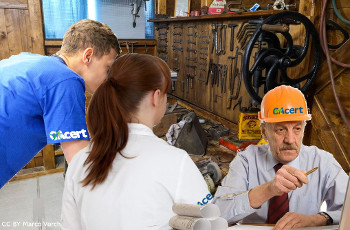Retour en fonctionnement du serveur de signature
Le serveur responsable de signer à la demande les certificats émis par CAcert dispose de deux disques durs, en redondance l’un de l’autre. Lorsqu’un dysfonctionnement se produit, aucune maintenance à distance n’est possible, car la machine n’est intentionnellement pas branchée au réseau. Seul un câble série permet d’échanger requêtes et réponses avec le reste de notre infrastructure. Aucune connexion n’est possible par ce moyen.
Or, depuis le 2 Août, nous observions la mise en attente de toutes les demandes de signature de certificats. L’équipe des infrastructures critiques est donc intervenue sur site ce 21 Août. Un problème dans le traitement d’un des certificats était la cause du blocage. Ce problème est résolu, mais reste à diagnostiquer avec précision. Il s’agit d’une série d’incidents que nous n’avions jamais vus auparavant.
Compte tenu des deux autres incidents intervenus plus tôt cette année, liés au système de fichiers de notre serveur de signature, nous devions accroitre sa résilience. Aussi, ce 21 août, l’équipe des infrastructures critiques a installé dans le rack un second serveur de signature, comme secours passif du premier. La présence de liens série dédiés vers chaque machine permettra à l’avenir de basculer très rapidement sur le second serveur de signature, en cas de nouveau problème. Dans tous les cas, les deux serveurs restent comme auparavant isolés du réseau.
Nous prions nos membres de nous excuser pour ces dysfonctionnements, et encourageons ceux résidant en Hollande où dans sa proche périphérie, à envisager de s’associer au travail de notre équipe des infrastructures critiques, ce qui augmenterait notre capacité d’intervention rapide.
Simultanément, nous espérons que l’intervention d’hier marque la fin de cette longue et exceptionnelle série.
English version
The server responsible for signing certificates issued by CAcert on demand has two hard disks, redundant to each other. When a malfunction occurs, no remote maintenance is possible, as the machine is intentionally not connected to the network. Only a serial cable is used to exchange requests and responses with the rest of our infrastructure. No connection is possible by this means.
However, since the 2nd of August, we have been seeing all certificate signing requests being put on hold. The Critical Infrastructure team therefore intervened on site on the 21st of August. A problem in the processing of one of the certificates was the cause of the blockage. This problem has been solved, but remains to be precisely diagnosed. This is a series of failures that we have never seen before.
In light of the two other incidents earlier this year related to the file system of our signature server, we needed to increase its resilience. So on 21 August, the Critical Infrastructure team installed a second signature server in the rack as a passive backup to the first. The presence of dedicated serial links to each machine will make it possible in future to switch very quickly to the second signature server in the event of a new problem. In any case, the two servers remain isolated from the network as before.
We apologise to our members for the inconvenience, and encourage those living in or near the Netherlands to consider working with our Critical Infrastructure team, which would increase our ability to respond quickly.
At the same time, we hope that yesterday’s intervention marks the end of this long and exceptional series.








